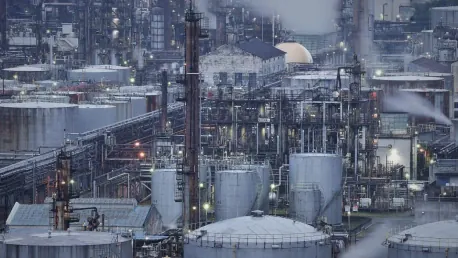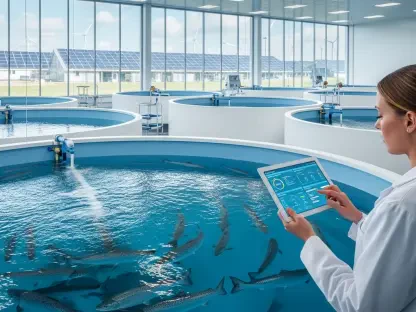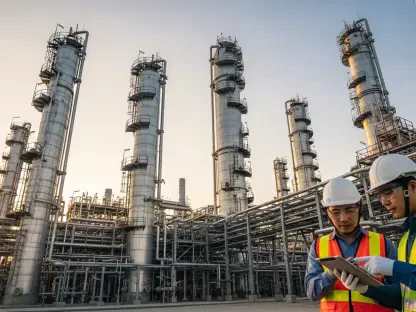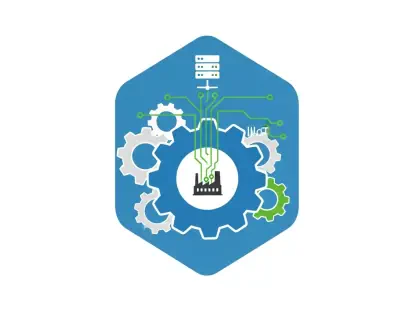Kwame Zaire is a manufacturing expert with a passion for electronics and equipment production. He is a thought leader on predictive maintenance, quality, and safety, as well as production management. In this interview, Kwame will discuss the petrochemical industry’s role as it navigates the energy transition, sustainability challenges, and strategic pathways for the future.
As the world pivots towards a low-carbon future, how is the petrochemical industry positioning itself at this crossroads?
The petrochemical industry is at a key crossroads and must balance its traditional growth prospects with evolving regulatory and sustainability challenges. This means the industry not only focuses on reducing its carbon footprint but also continues to meet the sustained demand for its products. By investing in cleaner technologies and integrating renewable energy sources, the industry aims to position itself as a critical component in the global energy transition.
Despite the global energy transition, why is the demand for petrochemicals projected to remain steady?
Petrochemicals are essential for a wide range of industries, including plastics, fertilizers, and pharmaceuticals. These materials are vital in our daily lives, and their demand remains steady because they are not easily replaced. Furthermore, the industrial expansion and urbanization in developing economies will drive continued growth in this sector.
How does the demand for petrochemicals in developing economies, like India, contribute to global growth?
In developing economies such as India, the demand for key petrochemicals like ethylene and propylene is expected to increase significantly due to urbanization and industrial expansion. This rising consumption is not only driving local economic growth but also contributing to the overall global demand, ensuring that the petrochemical industry remains a robust segment within the market.
What are the primary environmental challenges faced by the petrochemical industry today?
The industry faces several environmental challenges, including high carbon emissions from energy-intensive processes like refining and steam cracking. Additionally, regulatory pressures, such as carbon pricing mechanisms and plastic bans, aim to reduce the environmental impact but also increase production costs and pressurize profit margins.
How significant is the industry’s contribution to global industrial carbon emissions?
The petrochemical industry is responsible for about 18% of global industrial carbon emissions, which is considerable. This substantial contribution is primarily due to the energy-intensive nature of its processes, making it a focal point for environmental scrutiny.
What specific regulatory pressures are petrochemical producers facing?
Producers are facing a host of regulatory pressures, including carbon pricing mechanisms that make emissions more costly, plastic bans aimed at reducing single-use plastics, and stricter emissions controls. These regulations are forcing the industry to innovate and adapt to maintain competitiveness.
How are carbon pricing mechanisms, plastic bans, and stricter emissions controls impacting petrochemical production costs and profit margins?
These regulatory measures increase production costs as companies need to invest in cleaner technologies and processes to comply. This, in turn, pressures profit margins. Companies are finding it essential to seek efficiencies and innovations to offset these added costs.
What role does the circular economy and recycling play in reshaping the petrochemical industry’s demand patterns?
The circular economy and advancements in recycling are critical in reducing reliance on virgin petrochemical feedstocks. By increasing the use of recycled materials and developing biodegradable alternatives, the industry can align better with sustainability goals and reshape traditional demand patterns.
How are ESG-focused investment strategies influencing capital allocation in the petrochemical industry?
ESG-focused investment strategies are increasingly directing capital towards companies with credible decarbonization roadmaps and sustainable practices. Investors are looking for companies that are proactive in reducing their environmental impact, which influences how capital is allocated within the industry.
What steps are oil majors and petrochemical producers taking to present credible decarbonization roadmaps?
Companies are investing in feedstock diversification, integrating carbon capture and utilization technologies, and researching advanced materials like high-performance polymers and biodegradable plastics. They are also shifting towards renewable energy sources to present a credible path towards decarbonization.
In terms of feedstock diversification, what investments are companies making in bio-based and recycled feedstocks?
Companies are making significant investments in bio-based and recycled feedstocks to lower their carbon emissions and align with sustainability goals. This involves developing bio-based chemicals and increasing the use of recycled materials in their processes.
How is carbon capture and utilization (CCU) being integrated into the industry, and what are the economic challenges associated with it?
CCU technologies are emerging as a key solution for mitigating emissions. However, the economic feasibility remains a challenge due to high costs associated with capturing and utilizing carbon effectively. Companies must balance the technological benefits with these economic hurdles.
What advances have been made in the development of high-performance polymers and biodegradable plastics?
There have been significant advancements in creating high-performance polymers and biodegradable plastics that offer new avenues for growth beyond conventional petrochemicals. These materials provide sustainability benefits while maintaining the functionality needed in various applications.
How are petrochemical production facilities shifting towards renewable energy sources and hydrogen-based processes?
Production facilities are increasingly integrating renewable energy sources, such as wind and solar, and exploring hydrogen-based processes to reduce their carbon footprint. These shifts are essential for aligning with global sustainability goals and reducing dependence on fossil fuels.
How is the petrochemical industry balancing robust demand with the need to adapt to the evolving regulatory and sustainability landscape?
The industry is adopting a multi-faceted approach that includes investing in cleaner technologies, innovating with new materials, and diversifying feedstocks. By doing so, it can meet robust demand while adapting to the evolving regulatory and sustainability landscape.
Which innovations do you see leading the sector toward sustainable practices in the coming decade?
Innovations in recycling technologies, the development of biodegradable plastics, and the integration of renewable energy sources will likely lead the sector toward more sustainable practices. Companies that pioneer these changes will set the industry standard.
What factors will ultimately shape the role of the petrochemical industry in a decarbonizing world?
Factors such as regulatory requirements, technological advancements, and shifts in consumer and investor sentiment towards sustainability will play crucial roles in shaping the petrochemical industry’s future in a decarbonizing world.
How do you foresee the next decade serving as a litmus test for the petrochemical sector’s resilience?
The next decade will be critical for the petrochemical sector as it navigates increasing regulatory pressures and a growing demand for sustainability. Companies that can innovate and adapt will not only demonstrate resilience but also lead the industry into a new era of sustainable growth.









